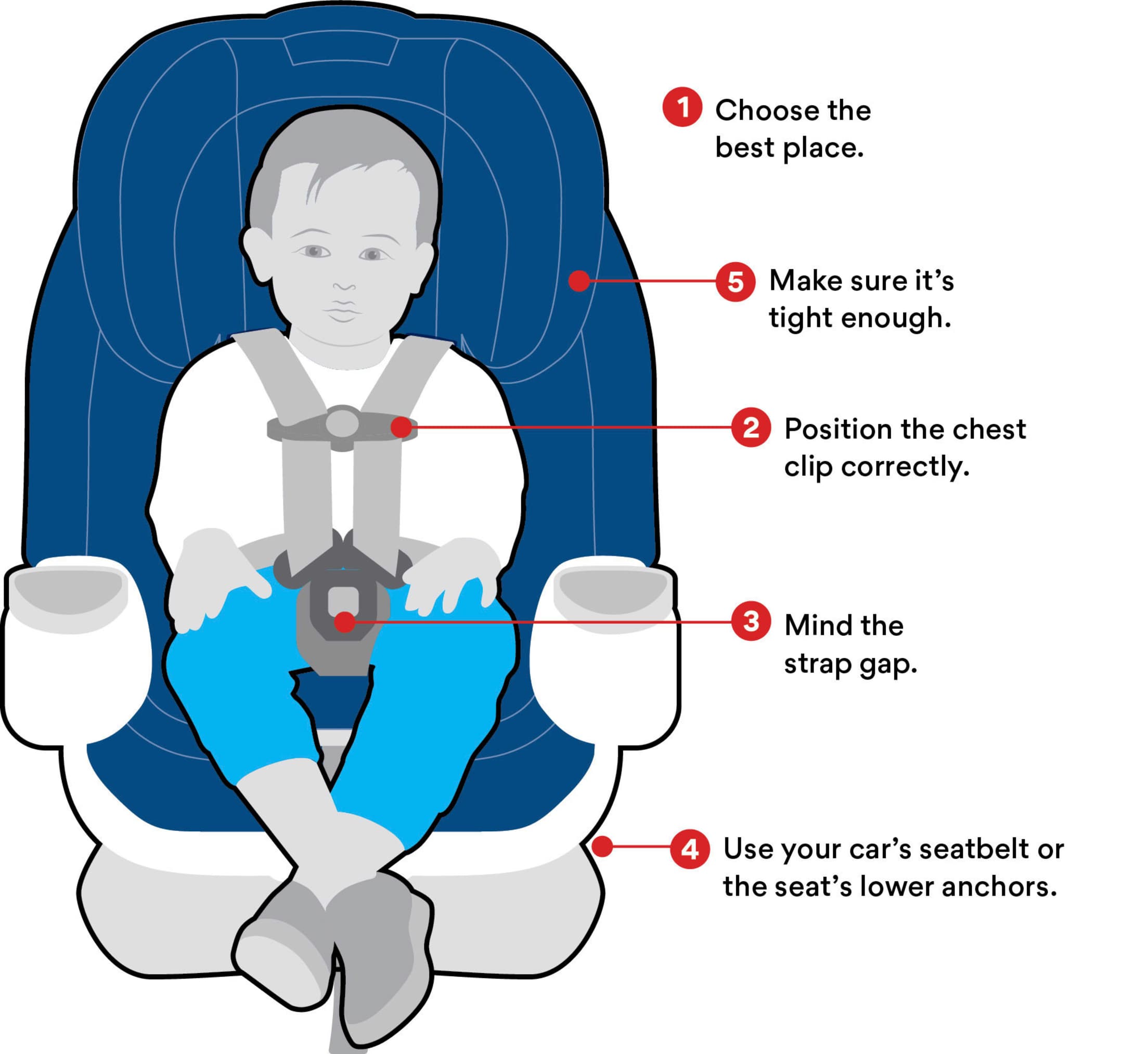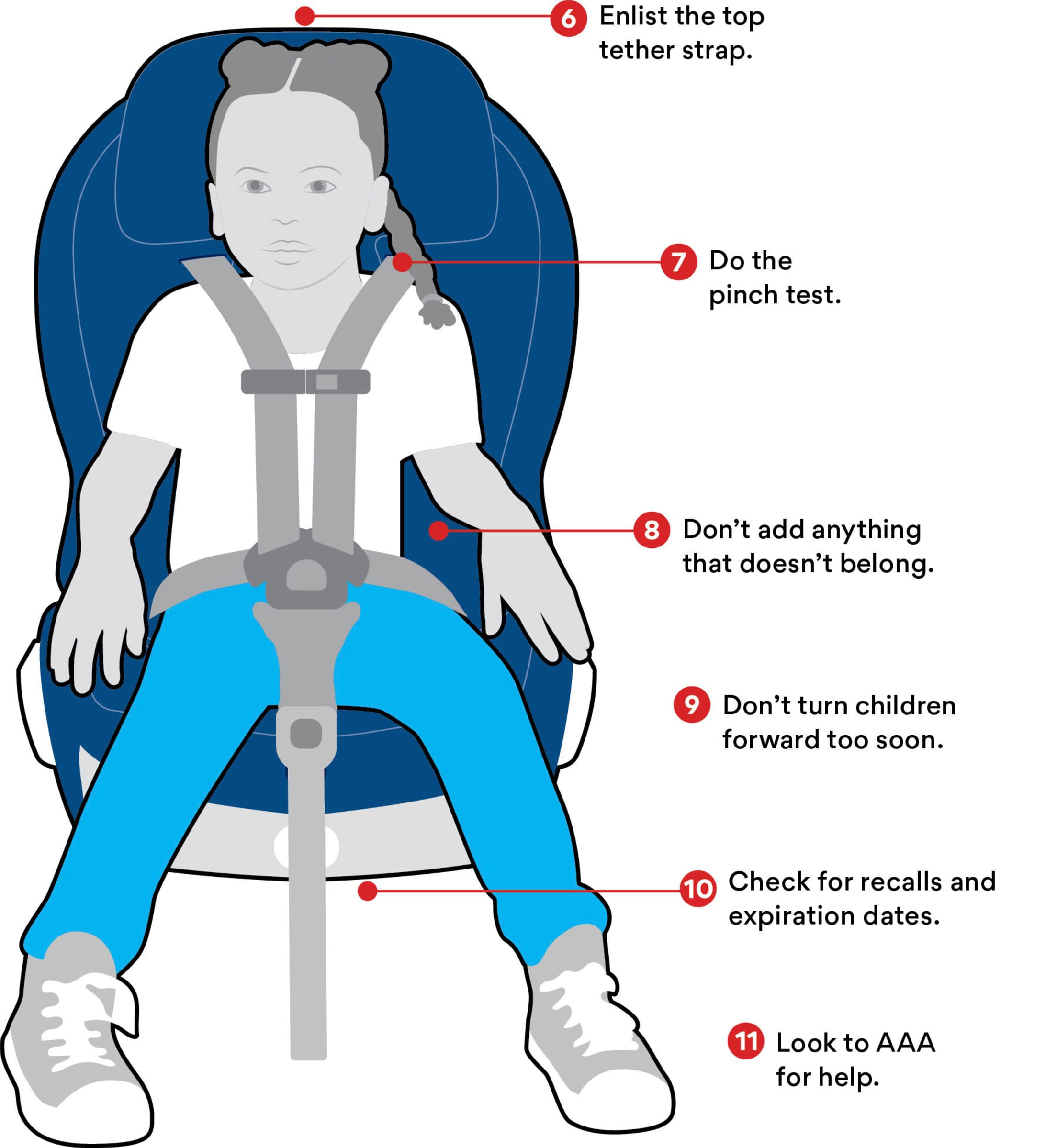
How to Install a Car Seat the Right Way
AAA offers tips for installing child-protective car seats to keep your youngest passengers safe.

Almost 75 percent of child-protective car seats in the United States are installed incorrectly. Errors are understandable: Installation instructions can be confusing and don't always account for the variables of real-world vehicles. How to make sure your youngest passengers stay safe back there? Here are some tips from the experts at AAA. With the exception of the top tether strap, they apply to both rear-facing and forward-facing seats.

1. Choose the best place.
Consult your vehicle's manual to learn where a seat can be safely installed in the back seat. Make sure the seat is at the correct recline angle.
2. Position the chest clip correctly.
Place the chest clip over the child's sternum at armpit level. Leaving it lower, over the child's stomach, can cause injuries.
3. Mind the strap gap.
If there's space between the bottom buckle of the car seat and your child's groin, consult the seat's manual: It may instruct you to adjust the strap or to fill the space with something like a rolled-up washcloth to create a more secure fit.
4. Use your car's seatbelt or the seat's lower anchors.
If you're using the seatbelt to secure the seat, feed it through the belt path (look for the arrows on the car seat labels) and consult your car's manual for how to lock it in place. If using the seat's lower anchors, check your car seat and vehicle manuals for approved positions. Note: Lower anchors have a weight limit (usually between 45 and 65 pounds), which includes the seat and the child; when your kid outgrows that limit, install the seat with the seatbelt.
5. Make sure it's tight enough.
If the seat moves more than one inch side to side or front to back when you pull on it at the belt path, that's too loose.

6. Enlist the top tether strap.
The top tether keeps kids in forward-facing car seats secure in a collision—so use it every time. Connect the tether to an anchor and tighten. Your car's manual will explain where your vehicle's tether anchors are and how to use them.
7. Do the pinch test.
To be sure the harness is tight enough, buckle in your child, then try to pinch the straps at his or her shoulders. If there's any slack, tighten. Harness straps should lie flat. In rear-facing seats, they should feed through the slot at or just below your child's shoulders; in forward-facing seats, they should be at or just above the shoulders.
8. Don't add anything that doesn't belong.
Unless the manual specifies otherwise, never attach accessories that weren't sold with the car seat, including toys, trays, mirrors, inserts, and pads. They can all affect how the seat will perform in a crash. If you need to keep your child warm, place blankets and jackets over the buckled harness, not under it.
9. Don't turn children forward too soon.
Little ones should stay rear-facing until they hit their seat's maximum weight or height limit. Similarly, older children should stay in forward-facing, five-point harness seats until they reach the equipment's weight or height limit. After that, it's time for a booster seat.
10. Check for recalls and expiration dates.
Before you buy, check the National Highway Traffic Safety Administration safety issues website to be sure that the model you want hasn't been recalled. Also check that it hasn't expired. There should be an expiration date somewhere on the seat. (It's typically printed on the back or bottom; if you can't find it, check the manufacturer's website.) If your seat is expired, replace it. If a car seat has been in a moderate or severe crash, get a new one.
11. Look to AAA for help.
After your best attempt at installing your car seat, have an expert double-check your work with an online inspection. Visit AAA.com/carseats to schedule an appointment with a certified technician. AAA experts will check for recalls, confirm that you're using the correct seat, and show you how best to install it and harness your child. This service is free.
AAA now offers free online car seat inspections and education.